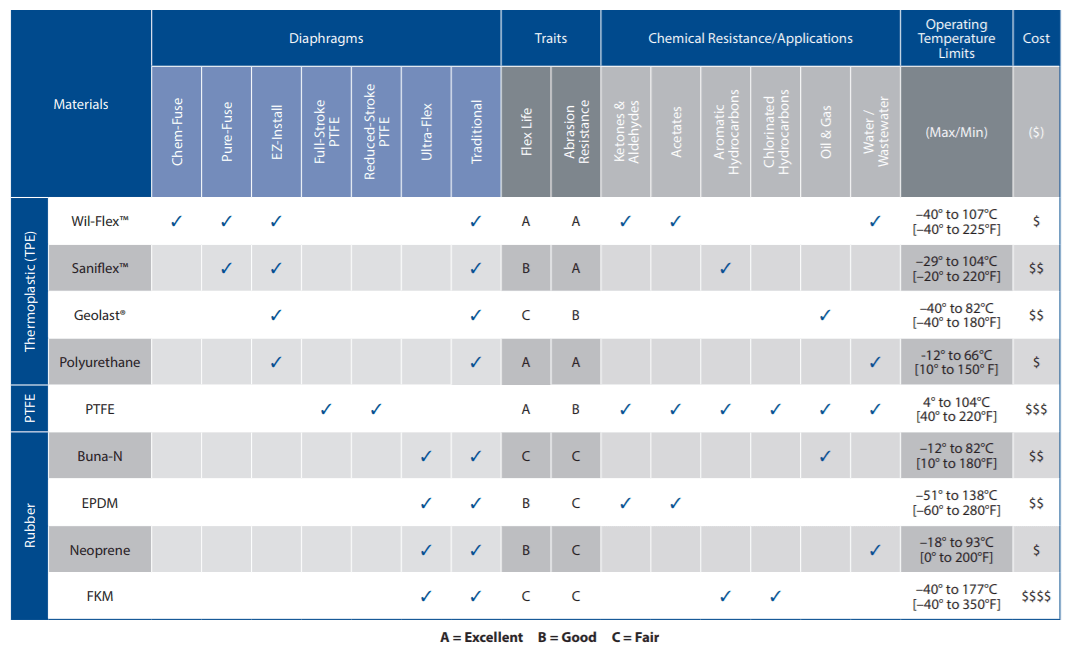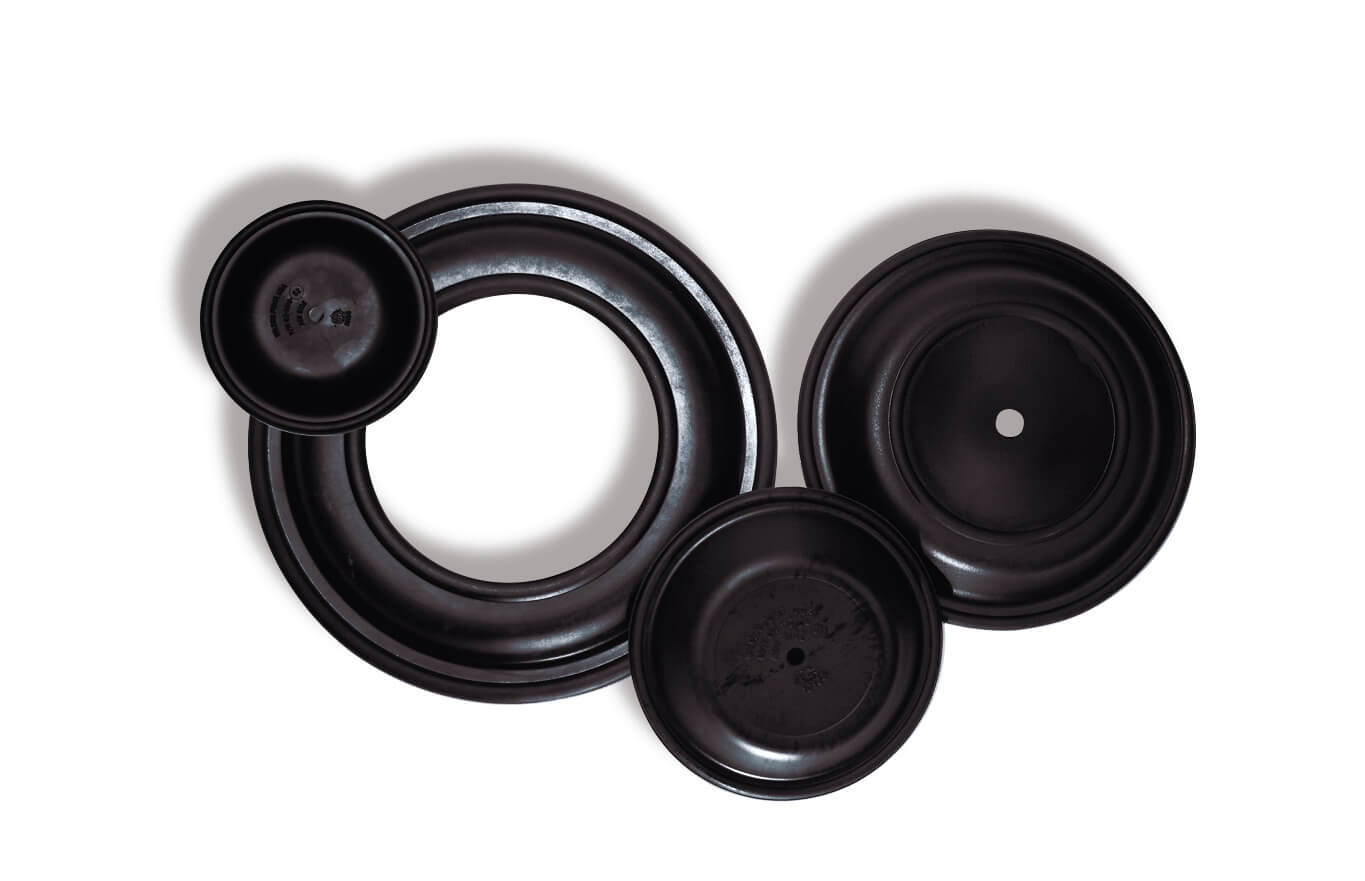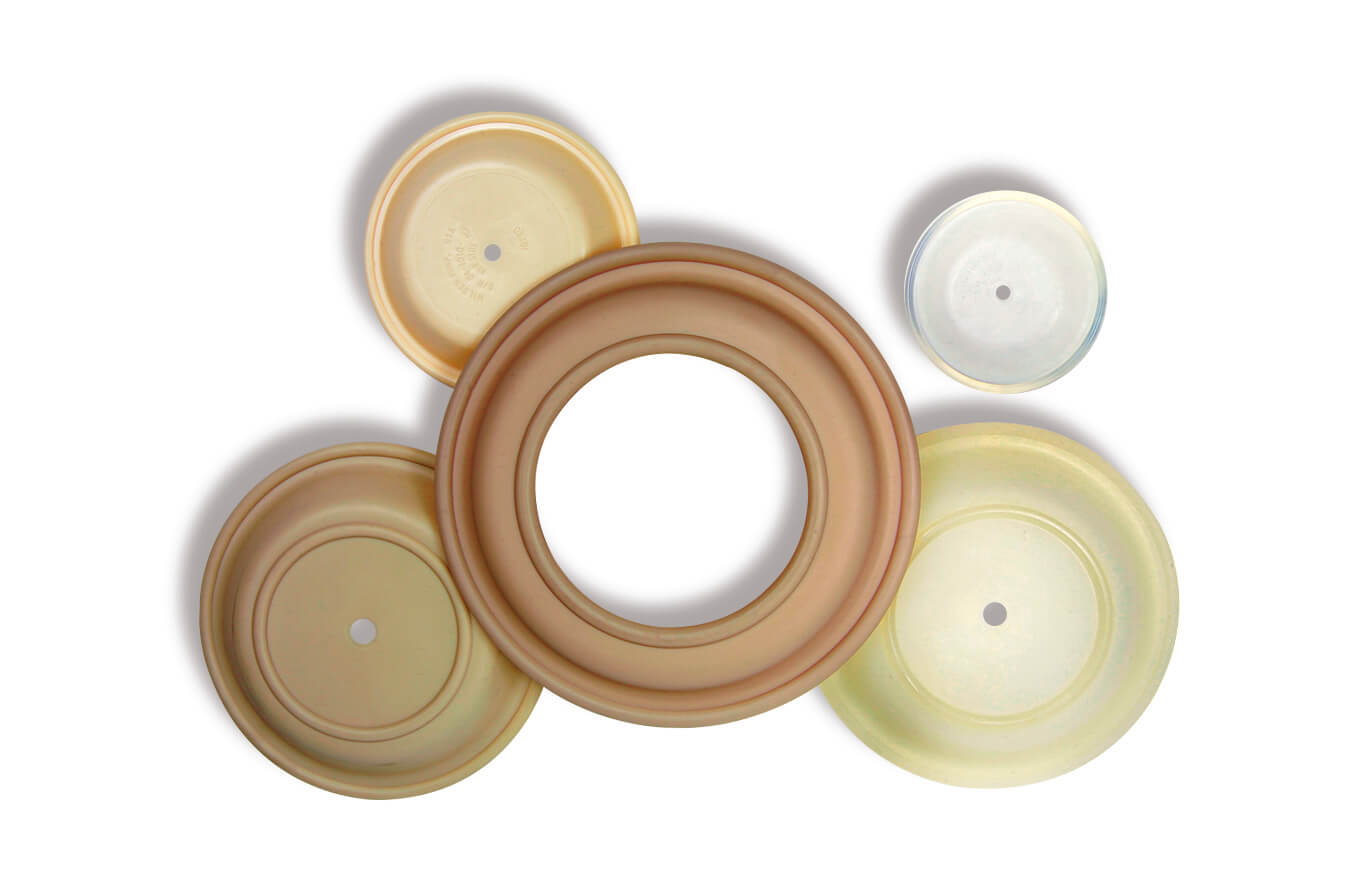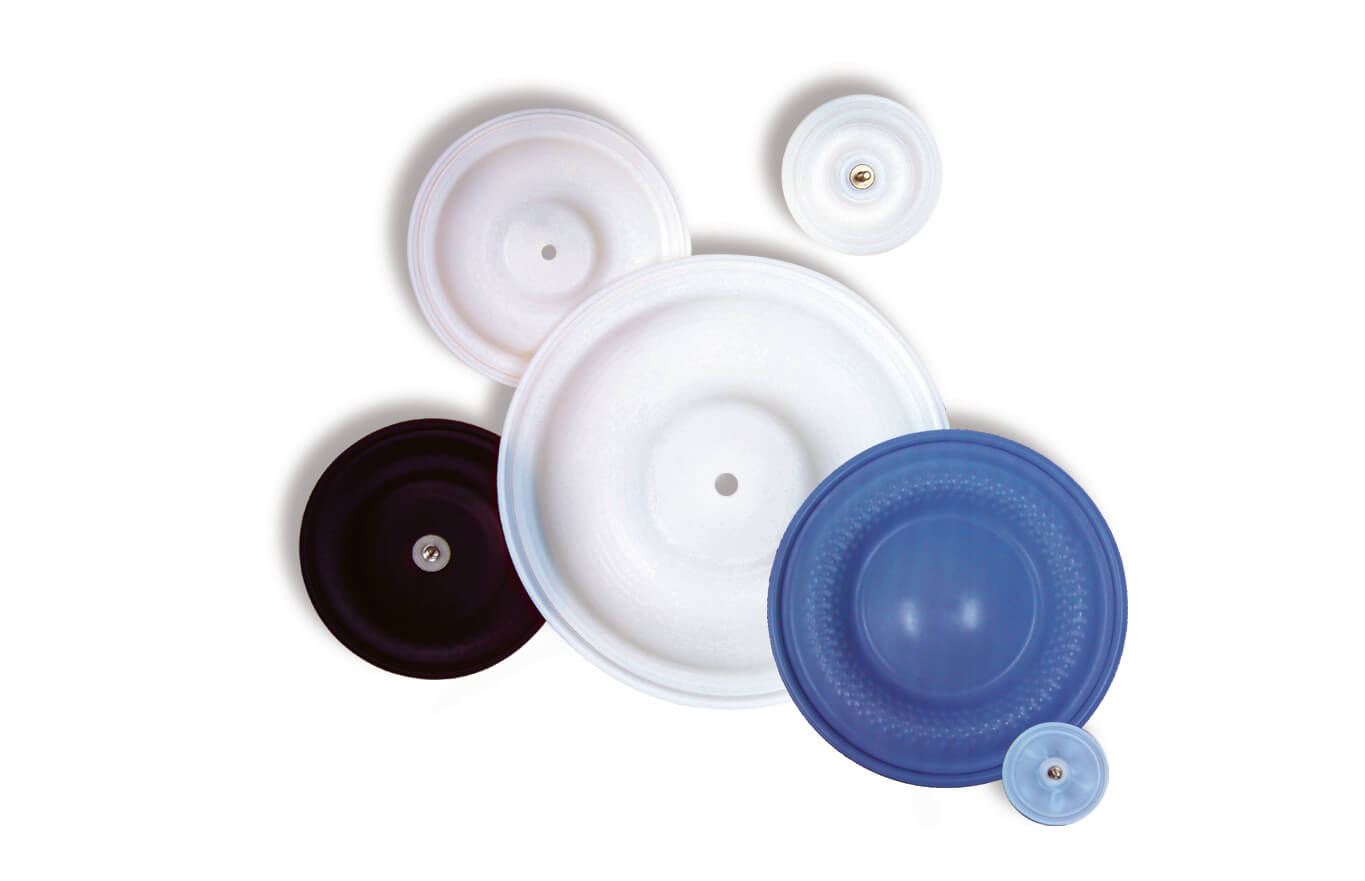You can’t have air-operated double-diaphragm (AODD) pumps without the diaphragms. After all, it’s part of the name—and the design. But diaphragms are more than just components that fit inside your AODD pump.
Diaphragms help ensure the safe, efficient and cost-effective operation of your AODD pumps and contribute to extending pump lifespan, but only if you select diaphragms that suit your specific application, whether for wastewater, paints, food products,
acids or any other substance.
However, selecting the right diaphragm can be challenging, especially since various diaphragm material options are available and every application requires unique performance characteristics.
Fortunately, Wilden® makes choosing the best diaphragm for your AODD pump simple. Let’s look at the factors you should consider when choosing the most efficient diaphragm for your AODD pump.
The Seven Factors to Consider When Selecting AODD Diaphragms
While operator expertise and familiarity with diaphragms offer a simple approach to diaphragm selection, even the most experienced operator should consider multiple factors
before making their choice. After all, there is no one-size-fits-all diaphragm for every application.
To identify the ideal diaphragm for a specific application, the following seven key factors should be taken into account: abrasion resistance, chemical resistance, temperature ranges, adherence to sanitary standards, inlet condition, longevity and cost.
- Abrasion resistance refers to how well the diaphragm can endure wear and friction caused by solids and particles present in the fluid being processed.
- Chemical resistance evaluates how well the material of the diaphragm aligns with the characteristics of the processed fluid.
- Temperature ranges encompass the diaphragm's adaptability and effectiveness across different temperature levels, including its performance under extremely high and low-temperature conditions.
- Sanitary standards are particularly relevant for diaphragms utilized in food, beverage, and pharmaceutical settings, ensuring the diaphragm aligns with hygienic and sanitary requirements.
- Inlet condition assesses a diaphragm's capability to transfer fluid between different locations.
- Longevity, also referred to as flex life, represents the projected lifespan of the diaphragm before it needs replacement.
- Cost involves various factors, including the initial price, anticipated application lifespan, costs incurred during downtime, and expenses associated with diaphragm replacement labor.
Now that we know what to consider when selecting a diaphragm, we can examine the three primary materials used for diaphragms.
The Three Primary AODD Diaphragm Materials
AODD pumps use three primary materials – rubber, thermoplastic elastomer (TPE), and polytetrafluoroethylene (PTFE). Each of these materials offers specific attributes that are
well-suited for different applications.

Rubber
Rubber AODD diaphragms are created using synthetic rubber along with a nylon fabric mesh to enhance their flexibility. There are four types of rubber diaphragm materials: neoprene, Buna-N, EPDM, and FKM.

- Neoprene is a versatile, cost-effective diaphragm intended for nonaggressive chemical applications, like water-based slurries and seawater. It is known for its longevity and abrasion resistance.
- Buna-N is most effective when used with petroleum- and oil-based liquids, ranging from gasoline to turpentine. Also known as nitrile, this diaphragm offers moderate longevity and abrasion resistance, ideal for food and beverage
applications.
- EPDM serves as a low-cost alternative diaphragm when pumping diluted acids or caustics in food, pharmaceuticals, manufacturing, and paint and coatings applications. It is recognized for their good longevity and moderate resistance
to abrasion.
- FKM diaphragms are engineered to handle extremely high temperatures and aggressive chemicals like aromatic and chlorinated hydrocarbons. They possess a moderate level of longevity and abrasion resistance.
TPE
TPE AODD pump diaphragms are manufactured using injection molding, eliminating the need for fabric reinforcement seen in their rubber counterparts. These diaphragms offer four material choices: polyurethane, Wil-Flex®,
Saniflex™ and Geolast®.

- Polyurethane is a versatile diaphragm suitable for nonaggressive chemical applications like water and wastewater, demonstrating outstanding longevity and abrasion resistance.
- Wil-Flex, a cost-effective alternative to PTFE, is ideally designed to handle corrosive fluids like sodium hydroxide and hydrochloric acid in chemicals, pharmaceuticals and wastewater applications, offering excellent longevity
and abrasion resistance.
- Saniflex, made of Hytrel®, offers low compression set characteristics, good longevity and excellent abrasion resistance, making it ideal for food processing applications.
- Geolast, similar to (Buna-N or Buna-TPE), is most commonly used in petroleum applications due to its extreme oil resistance and low oil swell. It Offers moderate longevity and good resistance to abrasion.
PTFE
PTFE can be used with a wide range of fluids, even highly-aggressive variations like hydrocarbons, acids, caustics, ketones and acetates, offering excellent longevity and moderate abrasion resistance in pharmaceutical and
food and beverage applications.
However, PTFE is non-elastic, so a backup diaphragm made of different materials is required for memory and flexibility. Neoprene, Saniflex and high-temperature Buna-N are ideal backup diaphragm options.

The Diaphragm Selection Guide
To optimize the performance of your AODD pump, you should carefully choose the most suitable diaphragm for your specific application—and selecting the right diaphragm means carefully identifying
and considering multiple factors and application requirements.
Fortunately, Wilden offers a Diaphragm Selection Guide to help operators
through the diaphragm selection process to find the right diaphragm that fits their specific applications.
Additionally, Wilden has a more extensive guide for diaphragm materials and their performance when processing different chemicals. Known as the Wilden AODD Pump Chemical Compatibility Guide, this resource provides a rating system for more than 700 chemicals on different diaphragm materials.
Prior to choosing the correct AODD pump diaphragm, it's important to confirm that your choice comes from an approved supplier or one endorsed by the pump manufacturer.
Pirated or unverified diaphragms can harm AODD pump performance, potentially
cause equipment and operator damage and void any warranty and manufacturer support.
Read the article: How to Select the Most Efficient Diaphragm for Your AODD Pump to learn more about selecting the right diaphragm.
Note:
Geolast® is a registered trademark of Celanese
Hytrel® is a registered trademark of DuPont Dow Elastomers.
Contact us for more information about Wilden AODD pumps and diaphragm offerings.